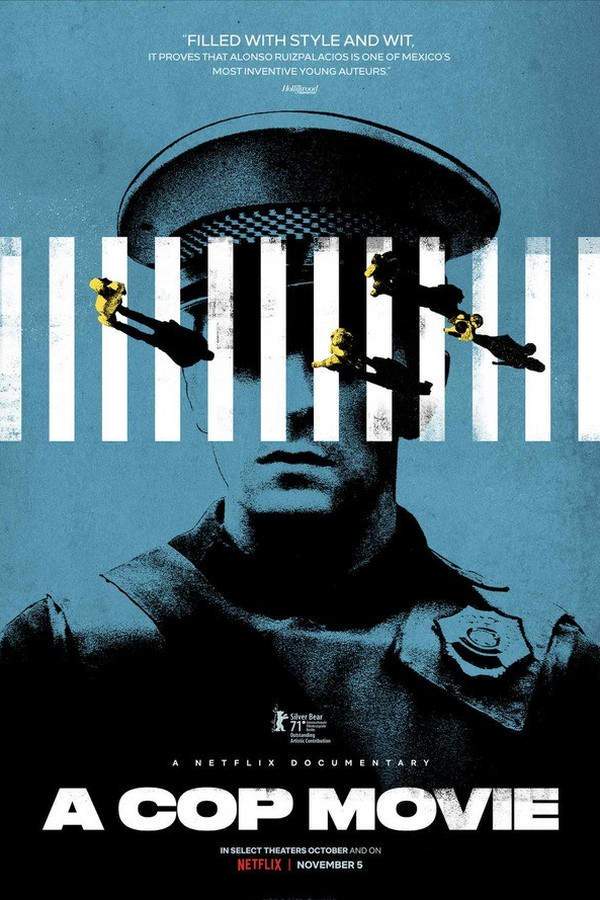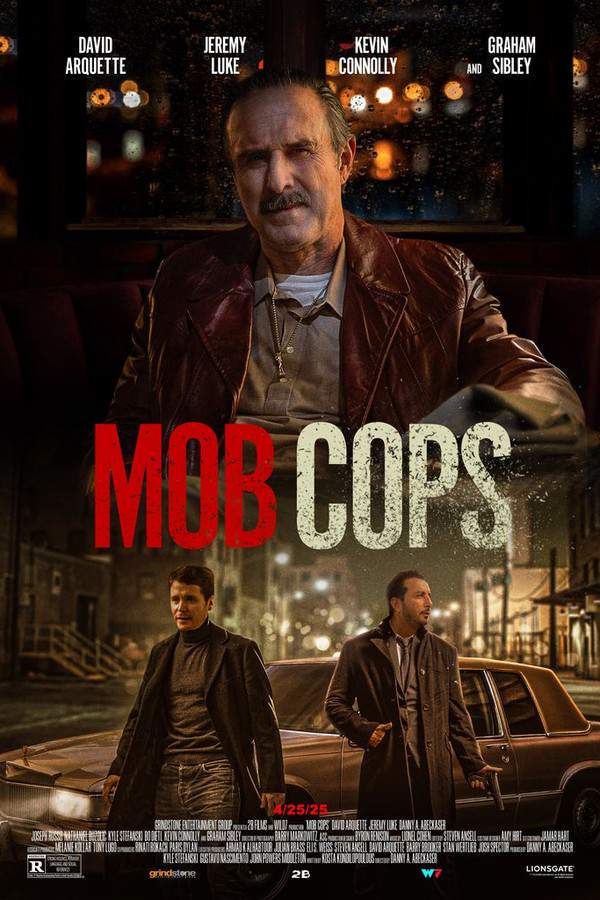
The New Centurions
Year: 1972
Runtime: 103 mins
Language: English
Director: Richard Fleischer
Written by a former LAPD officer, this nationwide bestseller follows an idealistic rookie who joins the force to fund his law‑school studies. Under the guidance of a hardened veteran, he becomes increasingly absorbed by the job, watching his ambitions and family life fade as policing consumes him.
Warning: spoilers below!
Haven’t seen The New Centurions yet? This summary contains major spoilers. Bookmark the page, watch the movie, and come back for the full breakdown. If you're ready, scroll on and relive the story!
The New Centurions (1972) – Full Plot Summary & Ending Explained
Read the complete plot breakdown of The New Centurions (1972), including all key story events, major twists, and the ending explained in detail. Discover what really happened—and what it all means.
Three rookie cops, Roy Fehler, [Stacy Keach], Gus Plebesly, [Scott Wilson], and Sergio Duran, [Erik Estrada], report for duty with the Los Angeles Police Department. Each man brings a different background to the badge: Roy Fehler is a family man who is married with a daughter named Rebecca and harbors dreams of one day becoming a law student; Gus Plebesly is a busy father of three who wants to do right by his kids; and Sergio Duran is a native of East L.A. who never expected to spend his days patrolling the very streets of his homeland. From the start, the trio faces the realities of a city that demands more than courage—it asks for endurance, adaptability, and a willingness to accept that danger can come from anywhere, at any moment. Roy Fehler, [Stacy Keach], Gus Plebesly, [Scott Wilson], and Sergio Duran, [Erik Estrada], are about to learn that the job will test their limits in ways they could not have anticipated.
Each rookie is matched with a veteran partner who embodies a different philosophy of policing. Roy Fehler pairs with the hard-edged Andy Kilvinski, [George C. Scott], a man who has spent nearly a quarter of a century on the force and has his own stark, unvarnished approach to the job. Kilvinski’s methods are controversial; he even keeps company with a disturbing habit of keeping street disturbances off the streets by confining strippers—Alice, Gloria, Wilma, and others he has supplied with liquor—inside a paddy wagon for hours, a tactic meant to curb trouble but one that raises questions about boundaries and ethics. Gus Plebesly, meanwhile, rides with Whitey Duncan, [Clifton James], whose more laid-back, sly manner contrasts sharply with the intensity of his rookie partner. Sergio Duran finds himself navigating the same streets with Kilvinski’s abrasive style in certain calls, testing his own resolve as a officer who wants to do right without compromising his own sense of humanity.
The department’s realities collide with the men’s personal lives in quick, jolting moments. A burglary call at a market becomes a grim lesson when Gus shoots at an armed figure in a dark alley and discovers, to his horror, that the person he shot is the owner of the store who was pursuing the robber. The shock of a life taken under his watch weighs heavily on him and becomes a turning point in how he perceives the risks of the job. Roy Feuer’s days take a different shape. He begins to frustrate his wife, Dorothy Fehler, [Jane Alexander], by growing more obsessed with police work, neglecting his family, and dropping out of law school. He loves the street life in a certain sense, but the absence of balance starts to wear on him, and the strain of missed family life becomes a thread that will pull at him as events unfold. He experiences a turning moment during a routine convenience-store holdup when he tells a couple in a parked car to move. Unbeknownst to him, the couple is the get-away crew for the robbers, and a bullet from a sawed-off shotgun rips through him, leaving him gravely wounded on the sidewalk.
Meanwhile, Sergio and Gus confront their own fears about the danger that accompanies their work. Sergio worries about the possibility of being shot, and the two share a tense moment as they handle a call involving a slumlord, a situation that reveals both anger and moral outrage when Andy Kilvinski explodes at a landlord who exploits the residents living in deplorable conditions. The scene underscores the moral ambiguities of policing: what passes for justice can look harsh when you’re the one holding the line. Roy’s recovery is slow but real, and he re-enters the world of patrols with a renewed, if tempered, sense of purpose. He faces a shootout again, and his resolve remains steady; he won’t flinch, even as the weight of fear and pain lingers.
As the rookies mark a full year on the force, Andy Kilvinski reaches his 25th anniversary and contemplates retirement, reflecting on the toll the job takes not just on the body but on personal life. His thoughts highlight a common thread in policing stories: the struggle to maintain a sense of self beyond the badge. Roy’s path takes another turn when he is assigned to the vice squad, where the work is hardly glamorous. The punishments and disappointments mount as he arrests people for behaviors deemed transgressive by some, and Dorothy, weary of the strain, decides to leave for San Francisco with their daughter Becky, seeking a different life away from the pressures that pulled her husband away from home.
Time passes, and Roy grapples with the consequences of both his professional and personal choices. Andy makes a rare return to city life, an attempt to reconnect with the force he loves, but the nostalgia is tempered by regret. The veteran’s decision to end his life—placing his service revolver in his mouth after a late-night phone call with Roy—casts a long shadow over the younger cops who had leaned on him for guidance. The losses echo through the ranks, seeping into Roy’s psyche and deepening his sense of loneliness and despair.
Depression begins to erode Roy’s stability, and he drinks during shifts as the pressure tightens around him. He answers a burglary call and encounters Lorrie Hunt, a nurse who helped him after he was shot; their brief connection becomes a lifeline as Roy starts to see his life beyond the badge again. Yet the line between personal and professional blurs; a later incident with a prostitute nicknamed “Silverpants” nearly sends him into danger before Lorrie helps stabilize him, and he faces a three-week suspension for intoxication on duty. The arc of his recovery is messy but indicates a path toward a healthier balance—one that invites him to re-evaluate the roots of his grief and to examine the choices that can lead a good man into the shadows.
The finale brings the department’s danger into sharp focus. Roy, Gus, and Sergio respond to a broad, sprawling disturbance, a sequence that becomes a high-stakes car and foot chase through crowded streets. After a long series of bookings and close calls, a woman seeking protection from an abusive husband sends them into a quieter, more intimate danger. Roy ascends the back stairs of a building, the tension mounting as gunfire erupts. The assailant fires a single shot, and Roy Fehler dies in Gus Plebesly’s arms, with Sergio Duran by their side. In that moment, the trio’s bond—their shared risk, their hopes for a better future, and the line between duty and humanity—stands as the memory of a life spent upholding a city and the cost of paying that price.
In the end, the film presents a stark portrait of three men forged by their experiences on the streets of Los Angeles. It is a story about ambition, obligation, and the price of courage, told through the quiet moments of daily patrols as much as through the loud, explosive ones. It is a meditation on how the best intentions can collide with hard truths, and how, sometimes, the ultimate act of bravery is simply choosing to keep going after losing someone you love.
Last Updated: October 09, 2025 at 12:36
Unlock the Full Story of The New Centurions
Don't stop at just watching — explore The New Centurions in full detail. From the complete plot summary and scene-by-scene timeline to character breakdowns, thematic analysis, and a deep dive into the ending — every page helps you truly understand what The New Centurions is all about. Plus, discover what's next after the movie.
The New Centurions Timeline
Track the full timeline of The New Centurions with every major event arranged chronologically. Perfect for decoding non-linear storytelling, flashbacks, or parallel narratives with a clear scene-by-scene breakdown.

Similar Movies to The New Centurions
Discover movies like The New Centurions that share similar genres, themes, and storytelling elements. Whether you’re drawn to the atmosphere, character arcs, or plot structure, these curated recommendations will help you explore more films you’ll love.
Explore More About Movie The New Centurions
The New Centurions (1972) Scene-by-Scene Movie Timeline
The New Centurions (1972) Movie Characters, Themes & Settings
The New Centurions (1972) Spoiler-Free Summary & Key Flow
Movies Like The New Centurions – Similar Titles You’ll Enjoy
Newman’s Law (1974) Complete Plot Breakdown
City Cop (1995) Spoiler-Packed Plot Recap
Violent Cop (1989) Full Movie Breakdown
Across 110th Street (1972) Film Overview & Timeline
The Rookie (1990) Movie Recap & Themes
L.A.P.D.: To Protect And To Serve (2001) Plot Summary & Ending Explained
The Stone Killer (1973) Complete Plot Breakdown
Street Kings (2008) Plot Summary & Ending Explained
A Cop Movie (2021) Full Movie Breakdown
Street Corner Justice (1996) Full Summary & Key Details
Cop (1988) Film Overview & Timeline
Between Midnight and Dawn (1950) Complete Plot Breakdown
Mob Cops (2025) Film Overview & Timeline
The Seven-Ups (1973) Spoiler-Packed Plot Recap
The Law Enforcer (1986) Full Summary & Key Details

















